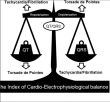Mechanisms of myocardial stunning in stress-induced cardiomyopathy
Abstract
Stress-induced cardiomyopathy, in contrast to acute myocardial infarction, is a type of acute heart failure characterized by reversible left ventricular dysfunction. Cardiac imaging primarily reveals left ventricle myocardial stunning, 81.7% of which is apical type. Emotional or psychological stress usually precedes the onset of stress-induced cardiomyopathy, which is increasingly being recognized as a unique neurogenic myocardial stunning disease. To distinguish between acute myocardial infarction and acute viral or auto-immune myocarditis, this review summarizes specific mechanisms of myocardial stunning in stress-induced cardiomyopathy, such as calcium disorders, metabolic alterations, anatomical and histological variations in different parts of the left ventricle, and microvascular dysfunction.
Key words: Stress-induced cardiomyopathy; Myocardial stunning; Calcium disorders; Metabolic alterations; Coronary microvascular dysfunction


